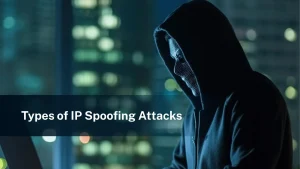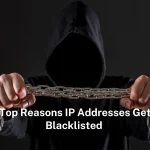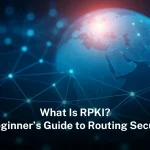The Internet has no single owner yet power lies with those who control infrastructure, standards, and data flow across this global network.
No one owns the entire Internet—it is run by many organisations working together.
Control rests with providers, standards bodies, governments and big tech firms that shape access, naming, and policies.
-Some of the most common types of IP spoofing attacks include DDoS, man-in-the-middle, ARP, and DNS spoofing.
- -These threats can lead to serious consequences, from stolen data and service outages to significant financial damage.
What it really means to say someone owns the Internet
Most people use the Internet every day. They check emails, search for things, watch videos or use social media. It feels like a single tool. But the truth is the Internet is not one thing owned by one person. It is a large group of smaller parts that work together. These parts include undersea cables, fibre lines, data centres, mobile towers, routers, and satellites. Different companies and governments own these things. Each one owns a piece. When all the pieces are joined, they make the Internet work as one network.
There is no central switch or master control. No single company or country owns everything. Some people think a big tech firm or the United Nations might own it, but that is not true. Instead, ownership is spread out. A cable in one country might be owned by a telecom provider. A router somewhere else could be owned by a university. A data centre could belong to a cloud company. Together, they carry traffic between users, websites, and apps across the world.
This shared system makes the Internet strong. It allows different groups to take part. But it also means no single group can make all the rules. If one company blocks content, users may still get that content from another route. If a part of the network breaks, other parts can still run. That is how the Internet was designed from the start.
Still, power does not vanish just because no one owns the full thing. The groups that run key parts can shape how people use the Internet. The ones who own cables and servers can control traffic. The ones who give out IP addresses or domain names can shape who gets online. The ones who build the apps and websites can guide what people see. So while no one owns the Internet, some hold more control than others. That is why the idea of “owning the Internet” is not simple. It means many things, depending on where you look and what part you are talking about.
Who governs technical standards and numbering
Although no one owns the Internet as a whole, certain organisations manage key systems that are essential for its operation.
The Internet Assigned Numbers Authority (IANA) oversees IP address space and root domain names. For example, IANA allocates large blocks of IP addresses to regional registries, which then pass them to internet service providers. The Internet Assigned Numbers Authority (IANA) handles IP address space and root domain names. IANA gives large blocks of IP addresses to regional registries. These registries then give them to internet service providers.
The Internet Corporation for Assigned Names and Numbers (ICANN) took over IANA’s work after the US government gave up control in 2016. A group called the Internet Engineering Task Force (IETF) makes the technical rules. These rules include protocols like IPv4 and IPv6. The IETF is made up of engineers and researchers from many places around the world. These bodies do not own the Internet but support its stability and global reach.
Physical infrastructure and service providers hold key roles
The infrastructure that keeps the Internet running—like fibre‑optic cables, undersea lines, data centres, routers and wireless links—is owned by a mix of telecom firms, governments, and private companies. Tier 1 network operators such as AT&T, Deutsche Telekom, Orange, and GTT carry massive amounts of internet traffic and connect with each other without paying for transit. Internet service providers connect everyday users to this backbone. While these ISPs do not own the Internet, they control entry and exit points for millions of users. Benton Institute notes that large corporations and some governments own much of the infrastructure and data hubs, giving them real leverage over how the Internet functions.
Major tech platforms shape user experience and control data
Beyond pipes and protocols, influence comes from those who control the services and the data. Companies like Google, Facebook, Amazon and Microsoft handle a vast volume of global traffic. Google alone processes around 25 per cent of North American Internet traffic, and outages on its network can dramatically disrupt global access. These tech giants do not own the physical network, but they steer user behaviour, content distribution, and platform policies. Their market dominance puts them in a position to guide how people experience and use the Internet.
How governments shape parts of the Internet and what that means for control
Governments do not own the entire Internet. They cannot claim that kind of control. But they do have strong influence over how people inside their countries use it. Each government has rules that apply to the companies and networks that operate within its borders. These rules can affect what people can see, where they can go online, and how fast their connections work. Some governments use this power to block websites. Others slow down certain services or limit access during protests or political events. They use the parts of the Internet they can reach to shape public access.
For a long time, the United States government had a big role in how the Internet grew. It oversaw important functions like assigning domain names and IP address blocks. This work was done through IANA, which stood for Internet Assigned Numbers Authority. In 2016, the US government gave up that control and handed it to a group called ICANN. This group is a non-profit based in California. It now manages many of the Internet’s naming systems. Even after the shift, some people still think the US has too much influence because ICANN is based there and uses US laws.
Other countries have started to question why they do not have more say. They believe the rules were made early on by a few countries and big organisations. These rules still guide the system today. But not everyone agreed with them in the first place. Over time, voices have grown louder asking for a more global and balanced system. Some experts have said the Internet should have international oversight. They believe the current setup gives a few players too much say over what is supposed to be a shared tool.
The debate becomes even more serious when domain names are involved. Each country was given a code—like .tv for Tuvalu or .io for the British Indian Ocean Territory. These codes are meant to belong to the countries they match. But some of them were given to private groups in other countries. Now those private groups profit from them. In some cases, the countries that own the name on paper see no money at all. Niue, for example, has taken legal action to try to win back control of its domain, .nu. Its leaders say they never agreed to give it away. Other nations have raised similar concerns. They say this system feels like digital colonialism.
This situation shows how early decisions made about the Internet still shape who controls what today. It also shows how complex the idea of ownership can be when rules are not clear or fair. Countries want control over names that belong to them. They want to protect their place in the digital world. But the system they are in now makes that very hard to do.
Why centralised platforms raise concerns about control and privacy
The Internet was meant to be open. It was built so many groups could take part. In theory, no one group would hold all the power. But in real life, that is not how things turned out. Over time, a few very large companies became much more important than others. These companies run most of the services that people use every day. Many people now rely on tools made by Google, Amazon, Meta, Microsoft and a few others. They use these tools for work, for school, for shopping, and for staying in touch with family or friends.
When more people use the same tools from the same companies, power starts to gather in one place. These companies then decide how data is handled. They pick how long it is stored, who can see it, and where it is sent. They choose what shows up in search results or on a social feed. They decide which apps can run on phones and which ones cannot. This level of control gives them great power. It also means fewer people can shape what the Internet looks like or how it works.
This kind of centralisation can be risky. When a service breaks, a large part of the Internet may go down. If one company changes its rules, it can affect millions of people all at once. If a platform decides to collect more personal data, users might have no real way to stop it. If the company is hacked, that data can be lost or stolen. These risks grow as more people trust a small number of services to handle almost everything online.
Some experts have warned that too much central control can hurt the original idea of the Internet. That idea was about sharing, choice, and freedom. When only a few groups have the keys, the system becomes less fair. It also becomes harder for new companies or community groups to build something different. This is why many people now talk about decentralisation. They want to see a future where control is shared again. They believe the Internet should not belong to a few powerful firms, but to everyone who uses it.
How ownership of the Internet is layered and hard to define
People often ask who owns the Internet. It is a fair question, but it does not have a simple answer. The Internet is not a thing that can be held or kept in one place. It is not like a house or a car. It is more like a system or a space that exists because many people keep it running. If one part stops, others take over. That makes it strong, but also makes it hard to say who is in charge.
To understand it better, it helps to think of the Internet like the sky. No one owns the sky. But planes still fly through it. Airports still control where they take off and land. Airlines own the planes and sell the tickets. Governments make the rules for flight paths and safety. The sky is shared, but it works because each part has someone taking care of it. The Internet works in a similar way.
There are many groups involved in running it. Telecom firms build the cables and towers. Data centres store the content. Software companies write the code that sends messages and displays videos. Standards bodies agree on how machines should talk to each other. Domain name groups keep the address system working. Governments pass laws that shape what can and cannot happen online. None of these groups owns the Internet alone, but together they make it run.
This setup creates both strength and confusion. It lets the Internet grow and change quickly. It also makes it hard to fix problems when they show up. If too much control sits with one group, others may lose out. If a rule is unfair, it may take years to fix. Ownership of the Internet is not about holding it in your hand. It is about who builds it, who pays for it, who makes the rules, and who gets to speak. That is why the question of ownership keeps coming up. It is not just about the network, but about power, freedom, and voice.
FAQs
What does “owning the Internet” mean?
Owning the Internet is not literal. It refers to controlling key infrastructure, standards, domain spaces or data flows. No one owns the whole system .
Who sets technical standards?
Standards are set by groups like IETF, IANA and ICANN. They make sure everything works together globally, yet none of them own the Internet itself .
Can any one country control the Internet?
Countries control parts of the network they regulate. They can block or shape content. Yet they cannot stop data crossing borders unless they shut off connections completely .
Why do big tech firms hold so much power?
Large platforms control where content is accessed, processed and stored. Their scale in services and infrastructure gives them strong leverage over the user experience and data flow .
How can users influence the Internet?
Users can join open standards communities, support decentralised tools, contribute to open-source projects or back community networks. These efforts help share power and foster ownership ideals .










Leave a Reply